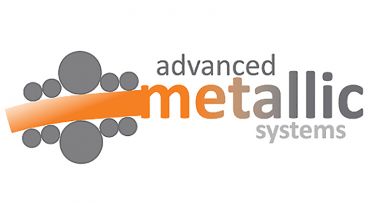Investigation on the effect of print geometry on porosity generation during the Laser Powder Bed Fusion [L-PBF] printing of Ti-6Al-4V parts
Laser Powder Bed Fusion 3D printed titanium-alloy spinal cages were studied to understand the influence of geometry on porosity generation.

An ongoing issue with the additive manufacturing of alloy parts is porosity generation, particularly at print sample edges. This study investigates the influence of sawtooth geometries on the generation of keyhole porosity during the L-PBF printing of Ti-6Al-4V spinal cage parts. This porosity appeared to be associated with localised overheating, possibly arising from inefficient cooling, due to the lower thermal conductivity of the alloy powder, compared with that of the bulk alloy. This conclusion was supported by the difference in microstructure between that obtained at cage edges and that of the bulk alloy. It was attempted to correlate the generation of porosity with changes in the photodiode data obtained using an in-process monitoring system during printing. It was concluded based on a Python-based algorithm analysis of the print dataset, that there was no clear correlation between the pores generated at the sawtooth edges and changes in photodiode intensity across the prints.
The possibility to work on such a versatile technology as LPBF printing was thrilling. I had the chance to put into practice all the know-how that I acquired throughout my academic years as an Aerospace Engineer, from fluid dynamics to material properties to data analysis.
I am personally very pleased by what we discovered with this study as it opens the possibility for much deeper studies on both geometry and printing parameters optimisation to improve LPBF even more in future.
Andrea Villano
This case study on LPBF process optimisation helped better understand how complex this manufacturing technology is and how many different elements have a deep effect on the overall quality of the build.
While not being strictly confined in the biomedical field, as such findings can ideally be applied to any complex geometry, the focus on a spinal cage could lead to an improvement to the manufacturing process of surgical implants, thus providing patients with an overall higher quality treatment. One of the major advantages of a deeper understanding of the effect of geometry on part's quality would be being able to design complex geometries without the risk of sacrificing the structural integrity of the part, which would be a step forward into achieving patient-specific implants tailored to one's needs.
Among the surgical implants, spinal cage implants are one of the most demanding in the matter of quality as they are used to treat injuries and pathologies very close to the spinal cord. For such reasons it is essential to have a reliable and durable implant to reduce as much as possible the risk of damaging the nervous system.
Biography
Andrea Villano completed his undergraduate studies in Aerospace Engineering at the University of Naples Federico II. His thesis focused on the thermodynamic properties of sintered metallic porous media. Following research experience in the Microgravity Research Centre at the Universite` Libre de Bruxelles he developed his interest in materials engineering, which led him to start his career as a PhD student in the Advanced Metallic Materials area of I-Form based in UCD. Andrea’s I-Form research is related to the optimization of the printing process for Laser-Powder Bed Fusion 3D printers through In-process Monitoring.

Study with us
Study for a fully-funded PhD or EngD in Advanced Metallic Systems to explore innovative materials and manufacturing routes to increase sustainability and performance.

